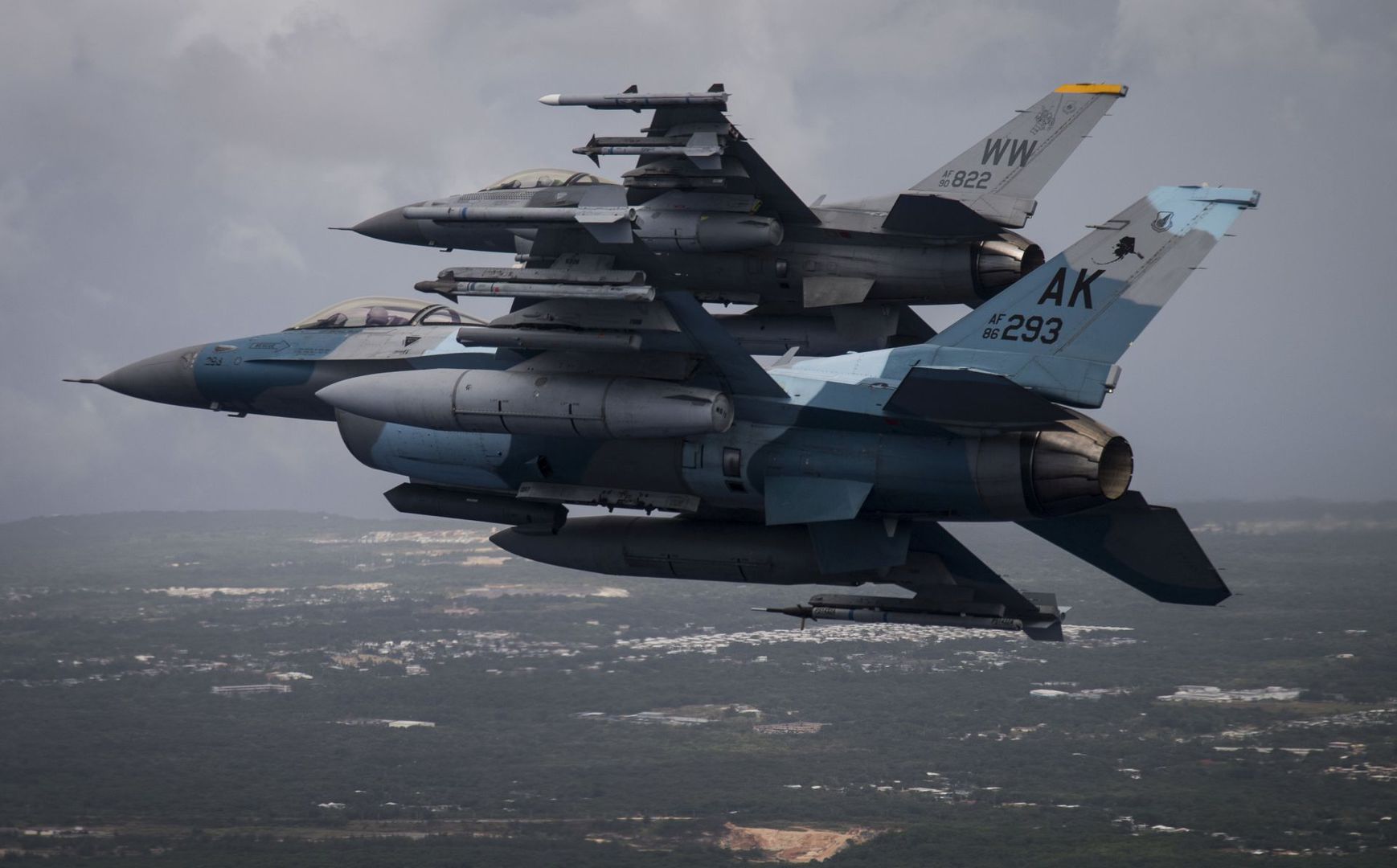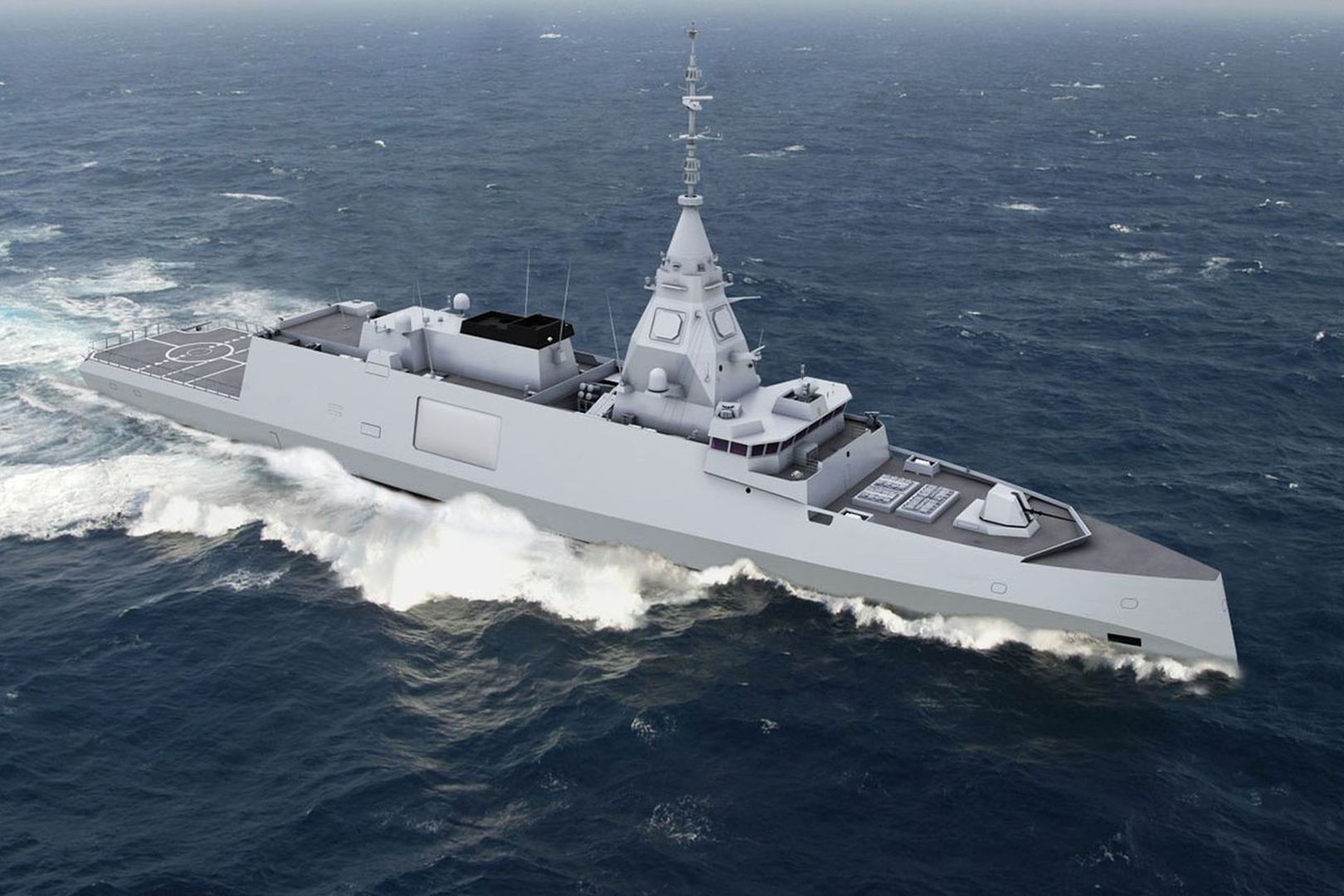ANDERSEN AIR FORCE BASE, Guam: Twelve Soviet-style blue, black and forest flanker-themed F-16 Fighting Falcons took flight from a frigid 20-below-zero airfield in the Alaskan frontier to traverse the Pacific to Andersen Air Force Base, Guam, to unleash havoc during exercise Cope North 2020, Feb. 12-28.
Operating in the mindset of the enemy, the 18th Aggressor Squadron from Eielson Air Force Base, Alaska, employs adversarial tactics to prepare U.S. and partner-nation aircrews for tomorrow’s victories through challenging, realistic threat replication and training.
This year’s iteration of Cope North brings together more than 100 aircraft and 2,100 military personnel from the U.S., Japan and Australia.
“It’s a pleasure to stand here on this strategic rock with our strategic partners – Japan and the United States of America,” said Royal Australian Air Force Group Captain Hinton Tayloe, Cope North 2020 exercise director. “Cope North is a collective demonstration of our readiness and resolve to live by our higher principles.”
The primary focus of the multilateral U.S. Pacific Air Forces-sponsored field training exercise is the coordination of combined air tactics, techniques and procedures and enhancing security and stability in the Indo-Pacific region.
“Each year we get a different team of units coming out here to meet and learn from one another, and this year we’re asked to replicate a more advanced threat,” said U.S. Air Force Capt. Travis Worden, 18th AGRS pilot and chief of weapons. “This is going to force much more planning and integration among international partners to find a valid solution. Ultimately, the design being at the end of this exercise, we’ll all be stronger for it.”
The 18th AGRS’ motto is to know, teach and replicate the threat better than any other squadron.
For pilots in training, the Aggressors, or “red air,” can be their worst nightmare. The squadron’s approach has a specific focus: to prepare “blue force” pilots from all participating countries to respond and counter enemy threats through the best and most realistic training possible.
“We are that force to punch blue air in the mouth,” Worden said. “We pride ourselves in doing everything we can in order to capitalize on mistakes our ‘good guys’ are making. The goal being in the long run the United States, Japanese and Australian militaries are stronger for it.”
One of two adversary air squadrons in the U.S. Air Force, the Aggressors pride themselves on learning and studying our countries tactics, so they can realistically replicate what they might see in combat.
“I’m very excited to participate in the complicated, large force employment,” said Japan Air Self-Defense Force Capt. Yutaka Aoyama, 305 Squadron F-15 pilot. “We cannot conduct such a large force employment in Japan, so this training will be extremely beneficial. I’m very much looking forward to this challenge.”
Mutually beneficial alliances and partnerships are crucial to strategy, providing a durable, asymmetric strategic advantage no competitor or rival can match.
“The unique advantage we have in supporting Cope North is that we get to interact with joint partners, specifically the (Japan Air Self-Defense Force) and Royal Australian Air Force,” Worden said. “Not very often are we able to interact so closely, and I think just as we are able to teach aspects of our flying to them, we learn the same in return.”
Cope North has integrated air operations for more than 40 years and continues to serve as a keystone event to promote stability and security throughout the Indo-Pacific. The network of alliances and partnerships showcased in the annual exercise remain the backbone of global security.
“The benefits of working with joint and coalition partners in an exercise like this can never be understated,” Worden said. “We bring different nations and allies together to collaborate on a problem set where we often find a solution we never would have come up with on our own, so when we come together, it’s a force multiplier that makes our alliance a more lethal force in any contingency operation in the future.”











